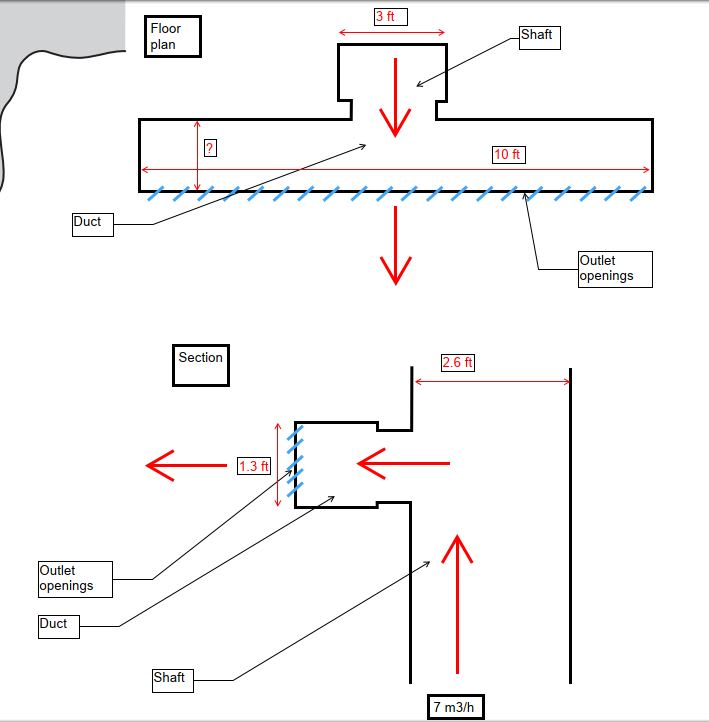blackarrow90
Civil/Environmental
Hello
I have a question related to the dimensioning of the ducts and outlet surfaces in case of fire. I am not an HVAC but a fire safety engineer and would like to understand the background on how the cross-section of ducts is designed.
Basically, there is a vertical shaft in the building which delivers 7 m3/h of fresh air and goes in the room via a horizontal duct with outlet surfaces (about 10 ft long, see the sketch below). Is it true that the highest velocity in the duct should not exceed 32 ft/s? So I would like to know how wide has to be the horizontal duct in order not to exceed this limit. Should the cross-section of this duct be taken as a relevant surface? In this case, the duct has to be at least 5.8 ft wide, right?

I have a question related to the dimensioning of the ducts and outlet surfaces in case of fire. I am not an HVAC but a fire safety engineer and would like to understand the background on how the cross-section of ducts is designed.
Basically, there is a vertical shaft in the building which delivers 7 m3/h of fresh air and goes in the room via a horizontal duct with outlet surfaces (about 10 ft long, see the sketch below). Is it true that the highest velocity in the duct should not exceed 32 ft/s? So I would like to know how wide has to be the horizontal duct in order not to exceed this limit. Should the cross-section of this duct be taken as a relevant surface? In this case, the duct has to be at least 5.8 ft wide, right?

